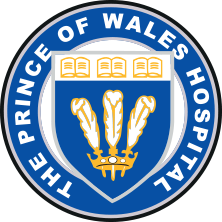NSW Telestroke Education Videos for Medical Officers
NSW Telestroke Service is committed to provide access to sustainable education for Medical Officers working in NSW Telestroke referring sites.
For other education resources, visit NSW Telestroke Service- Information for Health Professionals.
The Acute Stroke Assessment Protocol (ASAP) is an easy to use tool that will assist you in conducting a rapid and focused assessment of a potential stroke patient. The aim of the tool is to help determine if your patient is a potential candidate for time critical hyperacute reperfusion therapy and therefore suitable for review by one of the New South Wales Telestroke Service neurologists.
The seven-part video series below will demonstrate examples on how to complete each section of the ASAP tool.
ASAP | Part 1 of 7 - Presentation and Pre-morbid functions
ASAP | Part 2 of 7 - Higher Centres- Consciousness, Language, Dysarthria
ASAP | Part 3 of 7 - Higher Centres - Orientation & Comprehension
ASAP | Part 4 of 7 - Eyes - Visual Field, Visual Inattention and Best Gaze
ASAP | Part 5 of 7 - Motor- Face & Limbs
Breakdown of video | Timestamp to jump to for:
Face Strength- 00.48
Arm Strength- 01:42
Leg Strength- 03:40
Arm Ataxia- 05:27
Leg Ataxia- 06:57
ASAP | Part 6 of 7 - Sensation
ASAP | Part 7 of 7 - Summary & Pathways
The videos below will demonstrate examples on how to complete the ASAP tool based on three different clinical presentations.
ASAP Scenario 1- Judy
In this video, a doctor will use the ASAP tool to assess a patient who is identified as FAST positive in the ward.
ASAP Scenario 2 - Gary
In this video, a doctor will use the ASAP tool to assess a patient who has presented to ED with FAST positive symptoms and also appears to be drowsy.
ASAP Scenario 3 - Mary
In this video, a doctor will use the ASAP tool to assess a patient who has presented to ED with FAST positive symptoms and also appears to be confused.
